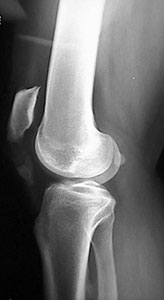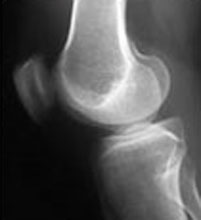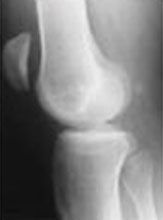Patella Alta

Introduction:
It is a condition in which the Patella is abnormally high riding with respect to the Femoral Trochlea (groove). This Patella is very mobile and is prone to subluxations and dislocations.
Associated findings:
- Small Femoral Trochlea
- Hypoplasia of Vastus Medialis
Causes
Congenital Acquired:
- Patella Tendonitis
- Patella Tendon Rupture
Clinical Features:
- Pain
- Knobly Knee sign: At 90 degree flexion Patella lying high above the Knee and to outer side
- Recurrent Subluxation.
- Recurrent Dislocations
Investigations:
- X-ray: Length of Patella ligament = Diagonal length of Patella

Normal

High Riding Patella
Conservative Management:
- Rest, ice, anti-inflammatory medications
- Quadriceps muscle strengthening
Surgical Management may involve any one or all of the following:
- A “lateral release” of the lateral structures is performed to decrease lateral pull on the Patella. (controversial)
- Tibial Tubercle (TT) is transferred Medially, Distally and Anteriorly.
- A “VMO(Vastus Medialis Obliqus) advancement” is performed to move this muscle distally and laterally across the Patella to improve its mechanical efficiency.
- Chondroplasty Patella (if necessary) to repair any lesions that may be present on the back of the Patella.
